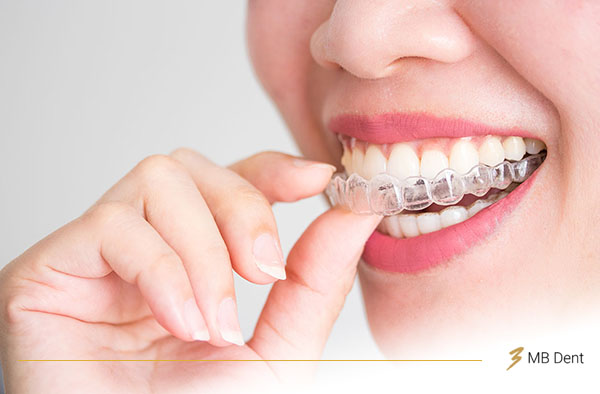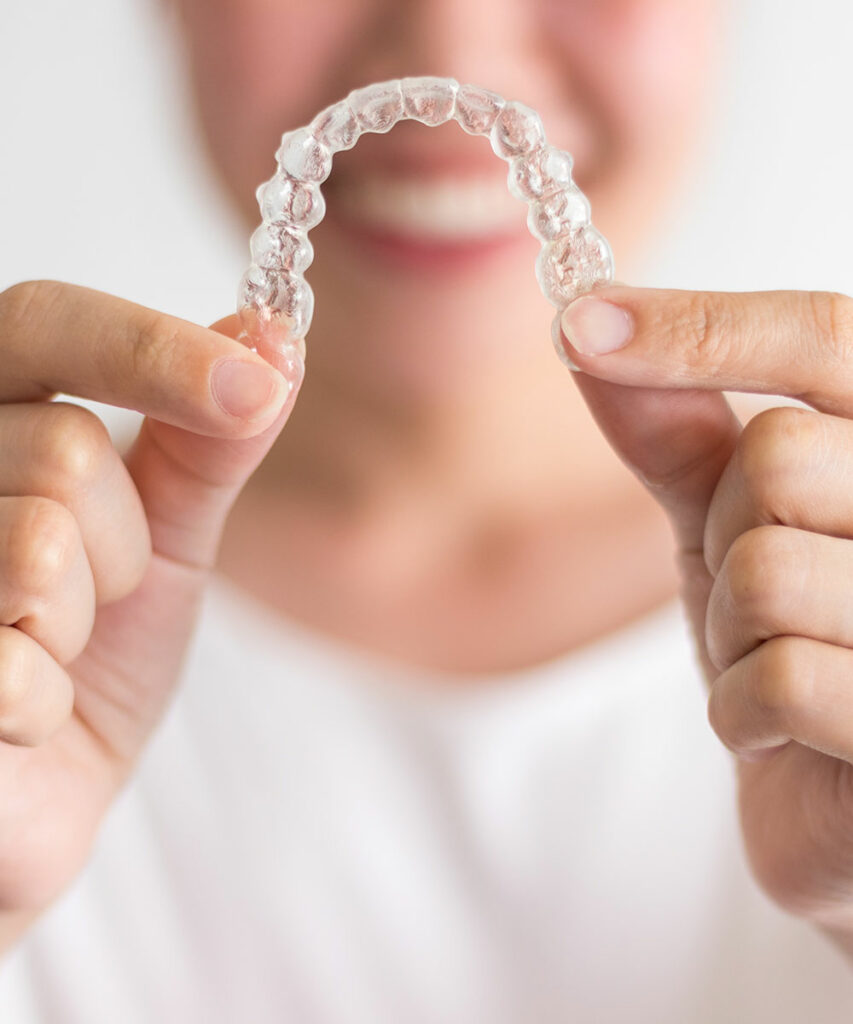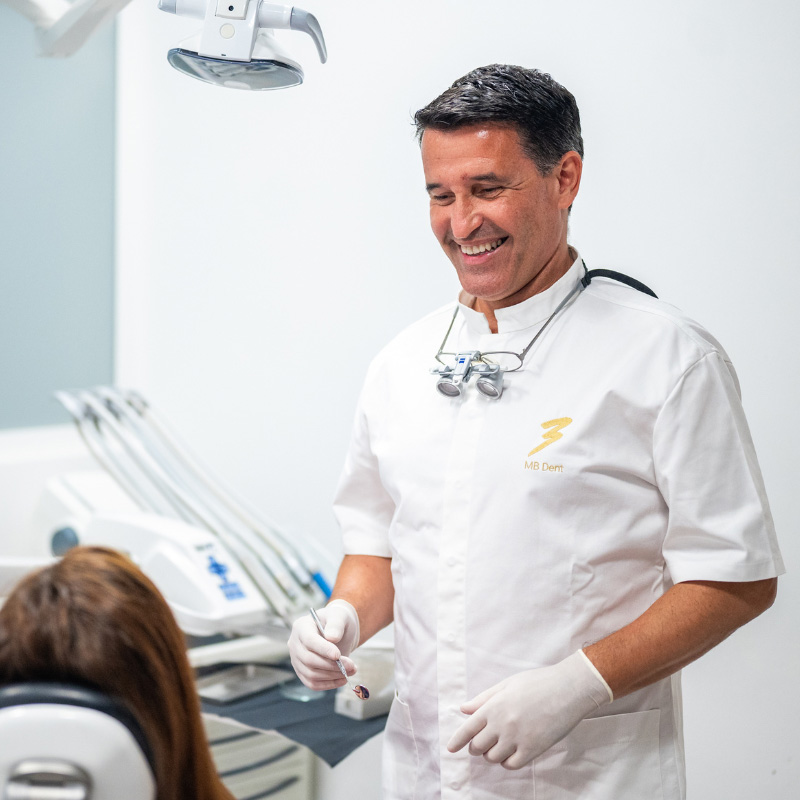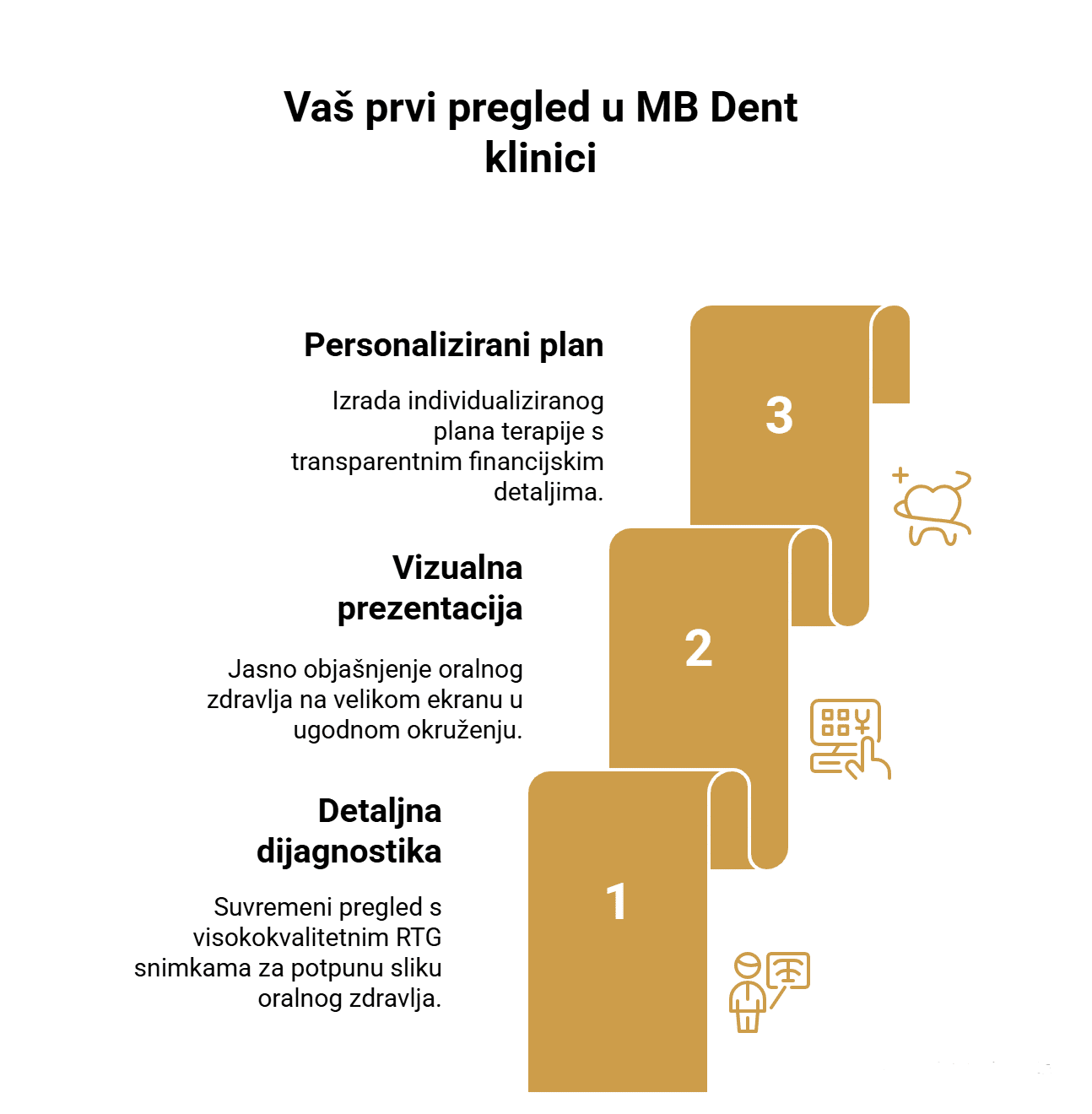Orthodontics is a specialist branch of dentistry that deals with the diagnosis, prevention, and correction of misaligned teeth and improper inter-jaw relationships.
What is orthodontics?
Strictly speaking, orthodontics is a branch of dentistry that corrects irregularities in the position of teeth and jaws to improve the function and aesthetics of a smile.
When is orthodontic therapy used?
Orthodontic therapy is used to correct irregularities in the position of teeth and jaws, such as crossbites, supernumerary teeth, irregular arrangement of teeth, open bites, and other problems. The therapy is usually applied to children and adolescents, but also to adults, to improve the function of chewing, speech, and aesthetics of the smile.

Misalignment of teeth, besides being an aesthetic issue, causes an inability to maintain proper dental hygiene and normal chewing, leading to caries, periodontal problems, physiological wearing of teeth and joint cartilage, and in severe cases, causes headaches, pains in facial muscles and the temporomandibular joint, and difficulty breathing while asleep.
The former belief that orthodontics is only intended for children has long been abandoned, and more adults are opting for orthodontic therapy.
Each orthodontic therapy is individual, and the decision on which therapy to apply is made by the orthodontist.
What types of orthodontic appliances (braces) exist?
There are several types of orthodontic appliances (braces) used to correct irregularities in the position of teeth and jaws:

- Traditional Metal Brackets: The most common type of orthodontic appliance. They consist of metal brackets that are glued to the teeth and connected by a wire that is gradually adjusted to achieve the desired tooth position. The appliance consists of brackets glued to each tooth and a wire arch whose tension causes the teeth to move.
- Ceramic Brackets: Similar to metal braces, but made of ceramic, which is less noticeable and more aesthetically pleasing. The brackets are tooth-colored or transparent, making them more discreet.
- Lingual Braces: Placed on the inner side of the teeth (lingual side), making them almost invisible from the outside. This option offers high aesthetics but can be more demanding for maintaining oral hygiene.
- Clear Aligners: Transparent, removable plastic aligners worn over the teeth. Each set of aligners gradually moves the teeth to the desired position. Clear aligners are comfortable and aesthetically attractive but are best suited for less severe irregularities. In most cases, clear aligners are used to correct and move teeth up to 4mm and most commonly for correcting minor irregularities in the position of teeth in the frontal region. After X-ray diagnostics and analysis of the situation in the mouth using precise digital scanners and special orthodontic software, Clear Aligner transparent aligners are made, which the patient wears for up to 22 hours a day. The transparent aligners are changed every two weeks until the end of therapy. The number of transparent aligners depends individually on the situation in the mouth. After the therapy, the teeth are stabilized with a movable or immovable retainer. The movable retainer is a final aligner that the patient wears at night, and the fixed retainer is glued to the rear surfaces of the front teeth.
- Advantages of clear aligners are:
- Invisibility – they are transparent, so patients can wear them all day. They can be removed in certain situations.
- Good hygiene – aligners can be easily removed for eating and brushing teeth.
- No brackets – no irritation to the cheek mucosa and lips.
- Expanded Brackets (Rapid Palatal Expander): Used to expand the palate, often in children to correct crossbites or other irregularities.
- External Appliances: Some cases require wearing external appliances like headgear, which attaches to braces to control jaw growth or move teeth.
What is the procedure for installing orthodontic braces (braces)?
Although the process depends on the type of braces and the patient’s situation, the process can be described as:
- Consultation: The first step is a consultation with an orthodontist. During this meeting, the orthodontist will examine your teeth, jaws, and face, discuss your goals and expectations, and determine if orthodontic therapy is needed and what type of braces is best for you.
- Impressions and Diagnostics: After the consultation, impressions of your teeth or digital impressions, X-rays, and photographs are taken to thoroughly assess your oral situation and create a treatment plan.
- Teeth Preparation: Before placing braces, teeth will be thoroughly cleaned to remove food debris and plaque. If the teeth are overcrowded, slight grinding may be necessary to create enough space for the brackets.
- Placing Brackets: Brackets (metal or ceramic) will be carefully glued to the front of your teeth using special dental adhesive. Depending on the need, a wire may also be placed to connect the brackets.
- Adjustment and Activation of Braces: The orthodontist will place the wire through the brackets and secure it with elastic bands or metal rings. The wire will be periodically adjusted to gradually move the teeth to the desired position.
- Habits and Hygiene: The orthodontist will provide instructions on caring for the braces, cleaning teeth, and maintaining oral hygiene to prevent cavities and gum problems during therapy.
- Regular Visits: During treatment, you will need to regularly visit the orthodontist to adjust the wire, check the progress of treatment, and make necessary adjustments.
- Removal of Braces: Once the desired result is achieved, the braces will be removed, and retention may be necessary to maintain the achieved tooth position.
How long do you wear braces?
They are usually worn for 12 to 18 months, but in cases of more severe anomalies, a longer period is possible. It is very important for patients to come for regular check-ups and maintain oral hygiene as recommended by the dentist and orthodontist.
Are there side effects of installing orthodontic braces (braces)?
Some of the temporary side effects of installing orthodontic braces, i.e., braces for teeth are:
- Pain and discomfort: After placing the braces, mild pain or discomfort may be felt in the mouth, especially in the first few days. This is common and can usually be alleviated by eating soft food and taking analgesics as directed.
- Mucosal Damage: Brackets and wires can cause minor irritations or scratches on the inner side of the lip or cheek. Orthopedic wax can help reduce friction while the mucosa adjusts to the braces.
- Speech Difficulties: Initially, difficulties in pronouncing some sounds or changes in speech may be noticed. This is temporary, and most people quickly learn to adapt.
- Eating Difficulties: Soft food and smaller bites can make chewing easier while you adjust to the braces.
- Increased Salivation: During adjustment, increased saliva secretion may be noticed. This is a normal reaction that will decrease as the body gets used to the braces.
- Changes in Hygiene: Cleaning teeth can become more challenging with braces, increasing the risk of cavities and gum problems. Regular and thorough oral hygiene is key.
- Food Trapping: Food can get stuck between brackets and wires, requiring careful cleaning.
- Speech Adjustment: Some people may notice temporary changes in the pronunciation of sounds or letters as the oral cavity adjusts to the braces.
For any additional information, follow the blogs of the MB Dent clinic. If you would like more information from Dr. Matko Božić and his team, write to us at info@mbdent.com, WhatsApp 095 3634 337, or call us on the phone number 01 35 35 435 or mobile 095 3634 337.


